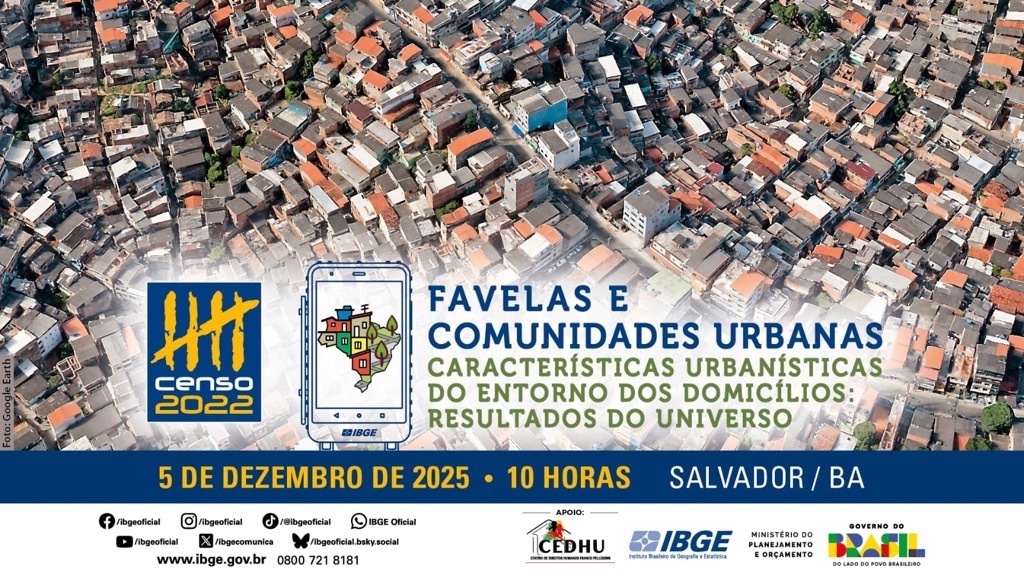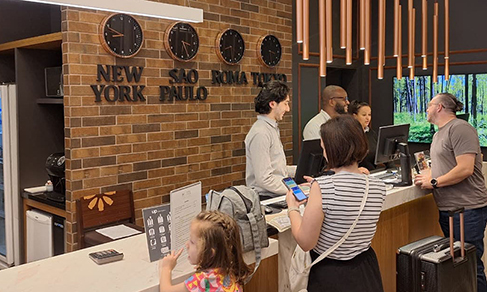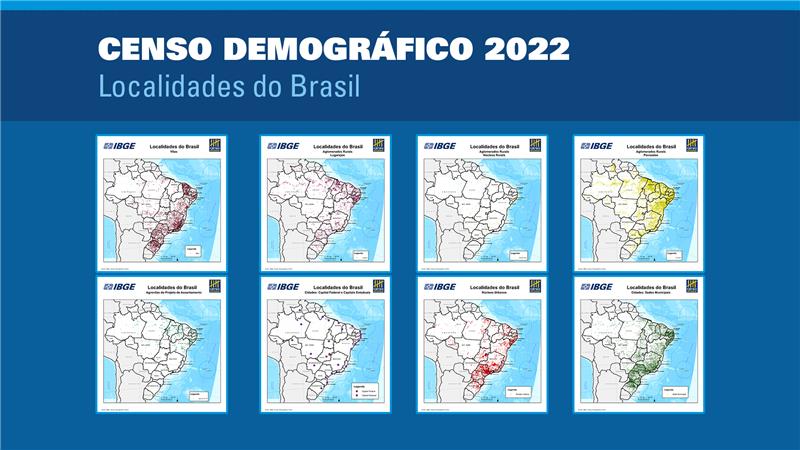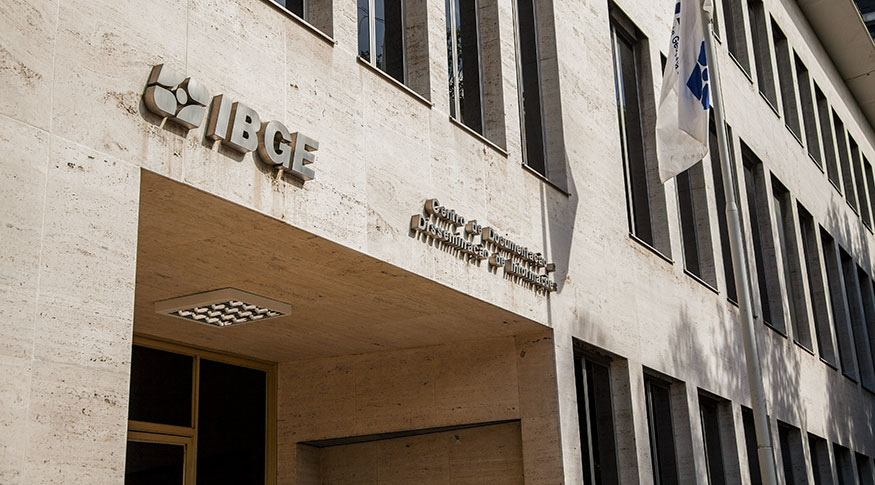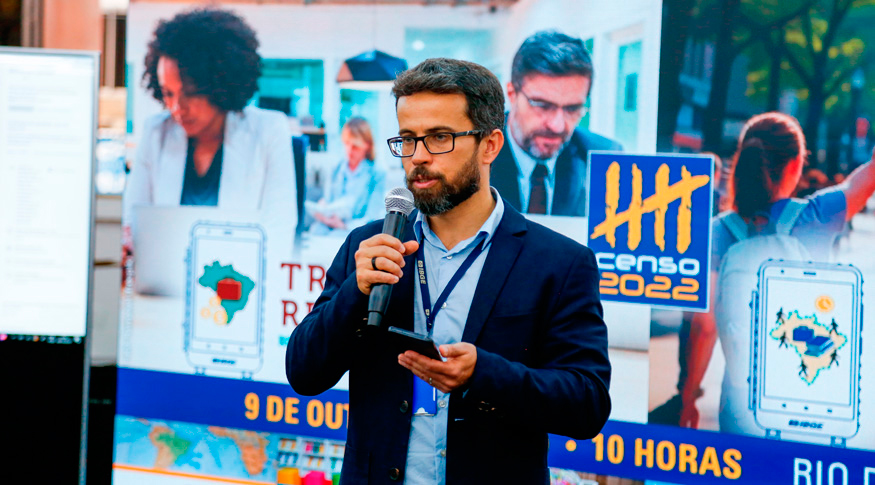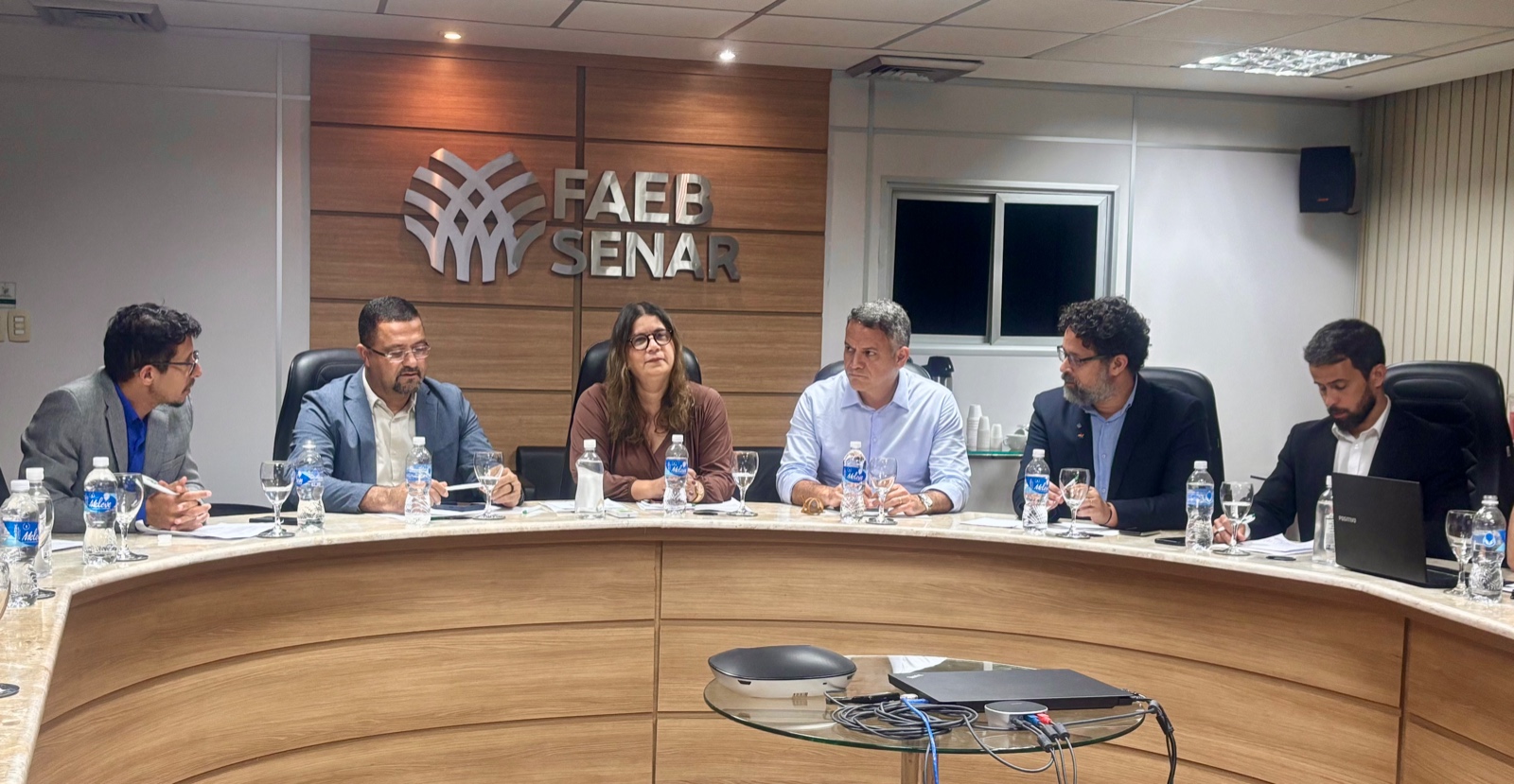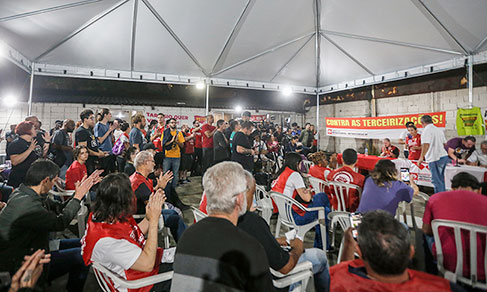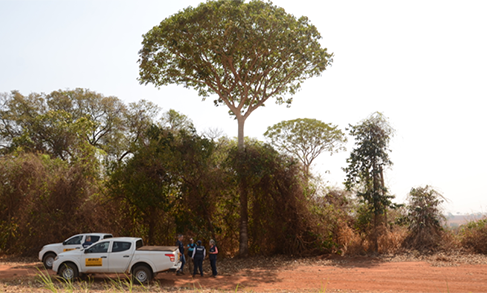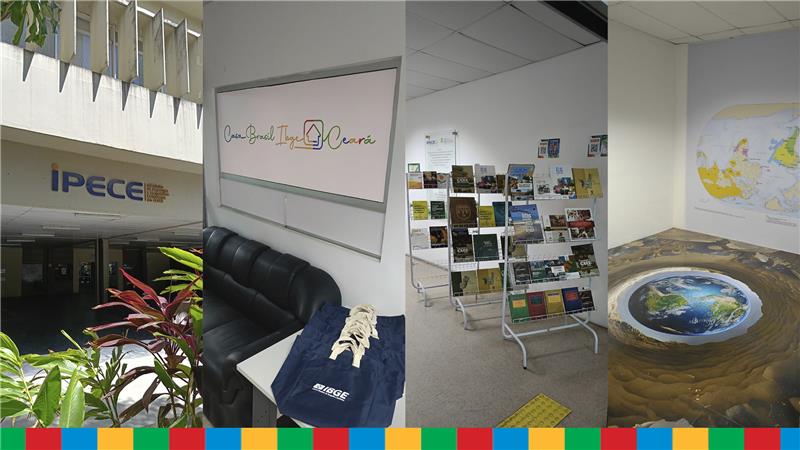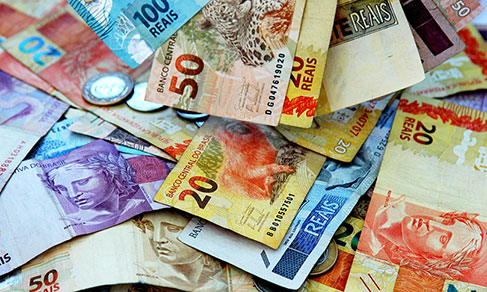2022 Census
2022 Census: Brazil has 8.5 thousand Indigenous localities, most of them in the North Region
December 19, 2024 10h00 AM | Last Updated: December 23, 2024 11h02 AM
Highlights
- The 2022 Census identified 8,568 Indigenous localities in Brazil, spread over all states and in the Federal District. Indigenous localities are places with permanent clusters of 15 and over Indigenous persons, contiguously organized, either in urban or in rural areas, inside or outside recognized Indigenous lands, including villages, communities, sites, camping, host institutions, among other sociocultural forms of organization of Indigenous peoples.
- Among the localities identified by the 2022 Census, 6,130 (71.56%) were within Indigenous Lands, reported, approved, regularized or designated as Indigenous reserves on the date of reference of the survey.
- In 2022, the North Region (44.47%) had the highest percentage of Indigenous persons (743,780 persons) and the biggest share of identified Indigenous localities, with 5,158 (60.20%) of the localities in the country. Next comes the Northeast, with 1,764 (20.59%), the Central-West, with 1,102 localities (12.86%), the South, with 308 (3.59%) localities and the Southeast with 236 (2.75%).
- The state of Amazonas had the greatest number of localities (2,571), gathering 30.00% of the localities of the country. In the second position was Mato Grosso, with 924 (10.78%) localities, followed by Pará, with 869 (10,14%) localities, and Maranhão, with 750 (8.75%).
- The greatest percentages of Indigenous localities outside Indigenous Lands which are reported, approved of, regularized or forwarded as Indigenous reserves were in Rio Grande do Norte (100%) and in the Federal District (100%), where there were not Indigenous lands in that situation, followed by Piauí (97.56%), do Ceará (79.50%) e do Rio de Janeiro (75.00%).
- The greatest quantities of Indigenous localities outside Indigenous lands were in Amazonas, with 1,078 localities (41.90%), in Pernambuco, with 237 (56.97%), in Pará, with 187 (21.52%), in Ceará, with (79.50%) and in Bahia, with 138 (68.32%).

According with Census data, published today (19) by the IBGE, there were 8,568 Indigenous localities in Brazil in 2022, identified in all states and in the Federal District. Most of them (71.55% or 6,130) were on Indigenous lands that had been reported, approved of, regularized or designated as Indigenous reserves on the Census reference date, while 2,438 (28.45%) localities were outside these areas. The North Region (60.20%) of the country concentrated the largest share of Indigenous localities.
Also today, characteristics of the Indigenous population and the housing units in which they live were released. Read the news on this topic here. The event to announce the “2022 Census: Indigenous Persons - Main Characteristics of Persons and Housing Units, by Urban and Rural Situation: Population results and Indigenous Localities” will take place today at 10 am at Casa Brasil IBGE, in downtown Rio de Janeiro. It will be broadcast live on the Digital IBGE channel and on the Institute's social media.
The results can be accessed on the IBGE website and on platforms such as SIDRA, Census Overview and PInteractive Geographic Plataform (PGI), and on the latter two platforms they can also be viewed using interactive maps.
Indigenous localities consist of all places in the national territory where there is a permanent cluster of Indigenous inhabitants. To identify these localities, minimum criteria for inhabitants and concentration of housing units were established, which were submitted to free, prior and informed consultation with the main Indigenous organizations in the country, with the participation of interested national bodies, as well as researchers and representatives of different segments of society.
“The mapping of Indigenous localities is carried out by the IBGE as a preparation for the Census. After collecting the information, it was supplemented with georeferenced information on the addresses of the Indigenous persons surveyed. As a criterion used for the spatial analysis of address data, all places that had at least 15 self-declared Indigenous persons and with contiguous housing units were considered, according to criteria that varied between urban and rural areas, and according to the geographic situation in which the localities were found”, explains Fernando Damasco, manager of Traditional Territories and Protected Areas at IBGE.
72% of the localities were within Indigenous Lands reported, approved, regularized or designated as Indigenous reserves
Of the Indigenous localities counted, 6,130 (71.55%) were located on Indigenous lands that had been reported, approved, regularized or designated as Indigenous reserves on the Census reference date, while 2,438 (28.45%) localities were located outside of these areas.
The highest percentage of localities outside of Indigenous lands that had been reported, approved, regularized or designated as Indigenous reserves was seen in the Southern Region of the country, where 146 (47.40%) of the 308 existing localities were in this situation. In the state of Rio Grande do Sul, this rate reached 58.93%.
With 39.06% of the total localities outside Indigenous lands, the Northeast also stood out in this regard. With the exception of Maranhão and Paraíba, all states in the Region had more than half of the localities outside Indigenous lands. Rio Grande do Norte had all of its localities in this situation. In the others, the percentages were as follows: Piauí with 97.56%, Ceará with 79.50%, Bahia with 68.32%, Pernambuco with 56.97%, Alagoas with 51.22%, and Sergipe with 50.00%.
In the Southeast, 31.78% of the localities were outside Indigenous lands. In Rio de Janeiro, this number reached 75.00%. In absolute terms, only 75 localities outside Indigenous lands were identified in the Region. The North had 27.18% of the localities on Indigenous lands, with Amazonas having the highest percentage (41.93%).
The Central-West (11.44%), in 2022, showed the lowest proportion of localities outside Indigenous lands. However, in Mato Grosso do Sul, which is home to the third largest contingent of Indigenous persons living in the country (116,469), 46.63% of its localities were outside areas reported, approved, regularized or designated as Indigenous reserves.
In absolute numbers, the largest number of Indigenous localities outside Indigenous lands were in Amazonas, with 1,078 localities (41.93%), in Pernambuco, with 237 (56.97%), in Pará, with 187 (21.52%), in Ceará, with 159 (79.50%), and in Bahia, with 138 (68.32%).
North Region had the largest number of Indigenous localities
The 2022 Census showed that the North of Brazil had the largest number of Indigenous localities (5,158 localities) and Indigenous persons (753,780 persons). This is equivalent to 60.20% of the identified Indigenous localities and 44.47% of the country's Indigenous population, respectively. The second place in the regional ranking went to the Northeast, where there were 1,764 localities (20.59%), followed by the Central-West, with 1,102 localities (12.86%), the South, with 308 localities (3.59%), and the Southeast, where there were 236 localities (2.75%).
“It is worth noting that the concentration of Indigenous localities does not necessarily reflect the concentration of the population, but it does very well reflect the forms of socio-spatial organization of Indigenous peoples. Considering the context in which Indigenous persons adopt greater mobility between local groups or in areas characterized by the occupation of large territories, it is possible that there is greater spatial diversification and, consequently, a greater number of localities”, observes Mr. Damasco.
Among the 20 Brazilian municipalities with the most Indigenous localities, 18 belonged to the North Region. Seven of the 20 cities were in Amazonas, four in Roraima, four in Maranhão, three in Pará, one in Mato Grosso and one in Pernambuco. São Gabriel da Cachoeira (AM), with 505 localities; Alto Alegre (RR), with 168 localities; Jacareacanga (PA), with 167 localities; Amarante do Maranhão (MA), with 146 localities; and Campinápolis (MT), with 143 localities, were the first five municipalities on the list.
Almost a third of Indigenous localities were in Amazonas
In 2022, the largest continent of Indigenous localities in the country was in the state of Amazonas (2,571), with 30.00% of the localities. Next came Mato Grosso, with 924 localities (10.78%), followed by Pará, with 869 localities (10.14%), and Maranhão, with 750 (8.75%).
Indigenous localities in rural areas predominated in Brazil
Indigenous localities in rural areas were the vast majority in 2022. While 8,189 (96.00%) of them were located in rural areas, only 378 (4.00%) were identified in urban areas.
More about the survey
The 2022 Population Census: Indigenous Localities presents the mapping of Indigenous localities and other localities where Indigenous persons are concentrated in the country, initially produced as part of the update of the Census Territorial Base and improved based on the identification of spatial concentrations of persons self-declared as Indigenous.


